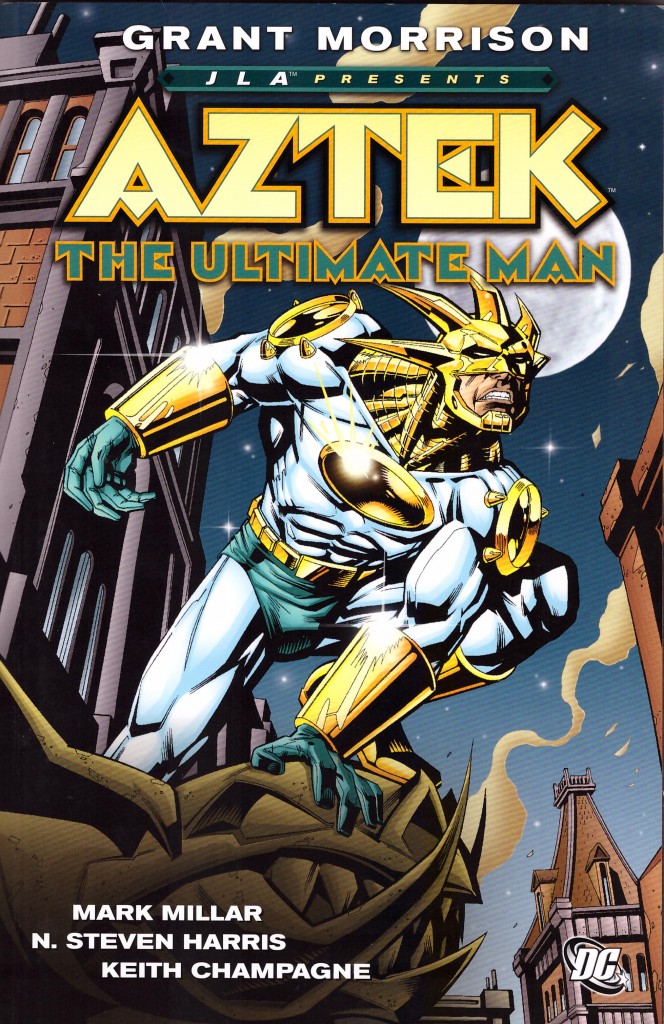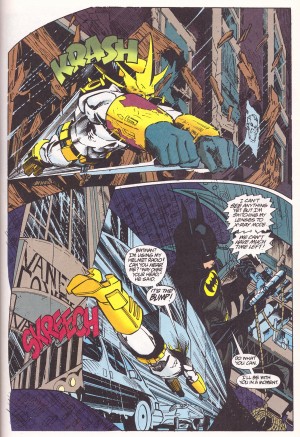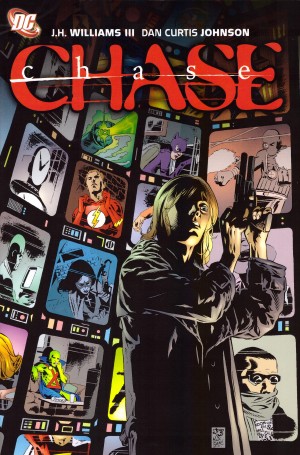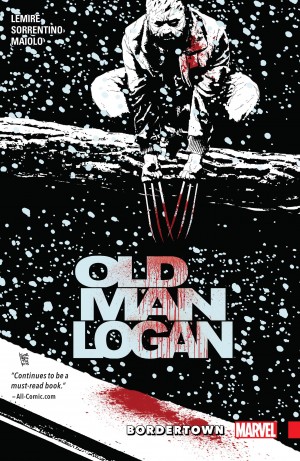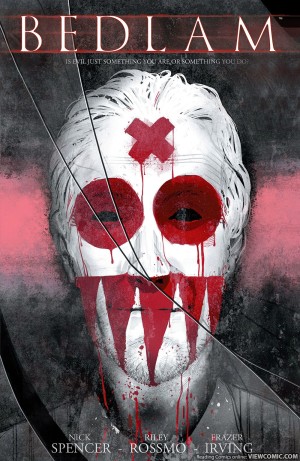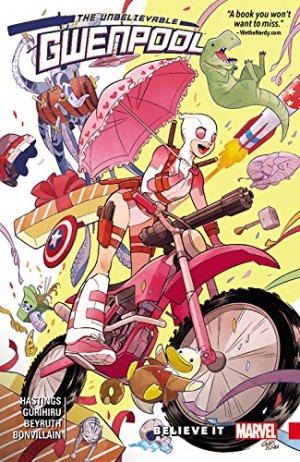Review by Frank Plowright
In 1996 Grant Morrison decided superheroes needed a jolt in the arm. The type of character then popular was satirised in the opening issue of Aztek the Ultimate Man as a testosterone-infused brute with a stupid name and violence as his first option. Morrison reached back to a more innocent era to create Aztek’s character, yet gave him up to date technological trappings, while his design, presumably the work of artist N. Steven Harris. echoed the complexity of the 1990s. The stack heels are an odd choice, however.
Morrison collaborated with Mark Millar on the writing, presumably with Millar scripting from Morrison’s plots given his diminished cover credit, and it’s designed as a commercial proposition. Aztek intrigues and his supporting cast is strong, Morrison and Millar wrong-footing us about them on several occasions, while the villains designed for the series are unusual and innovative, if sometimes gruesome. They, however, contrast the virtue of our hero.
The story opens with an air of mystery as Aztek arrives in Vanity City, deliberately cultivated as having a downtrodden population plagued by villains. His first person captions suggest an unfamiliarity with humanity at large, prompting intriguing speculation, and indicate he has a specific mission following years of training. He convinces as fundamentally decent and the writers play with his naive nature, bordering on the gullible at times, for several good scenes. They’re also excellent and throwing in several shock moments almost as throwaways, an attempted suicide for one. It’s emotional button pushing, but isn’t that what strong fiction is all about?
As the book continues it becomes ever more apparent that Aztek is being manipulated. He’s aware of some aspects, and ignorant of others, and Morrison develops this well. Is what he believes to be his origin truth or elaborate construction? There are points when Aztek lapses into the more surreal territory that Morrison was then better known for, but taken in its entirety these are few, and coupled with some new ideas about superheroes and villains and how their powers operate. It’s all fun, but it’s let down by the art.
Harris’ pages don’t match the imagination of the scripts he’s supplied, and fail to deliver the spectacular as often as they should. His Joker’s good, but this is set against too many people with ghastly gurning expressions and misproportioned hair. That actually works well on the Joker, and in Harris’ defence he’s no worse than many other artists of the era, and better than some with whom Morrison had previously collaborated. With twenty years distance, however, and in isolation, the series looks too dull too often. Why did Aztek fail to carve out an audience? The art is the starting point.
Anyone wanting to follow Aztek’s continuity from here should pick up JLA: World War III or Volume 1.
